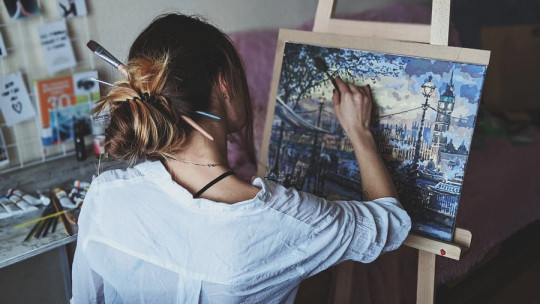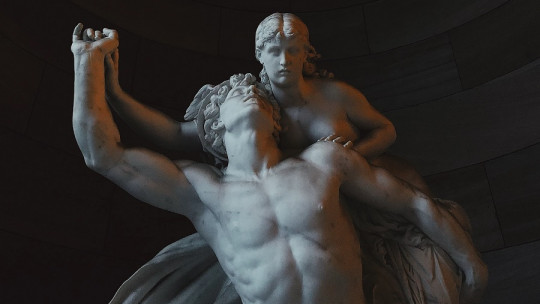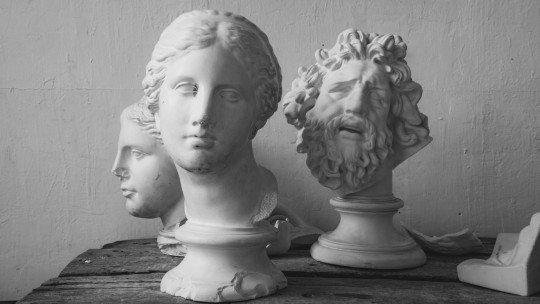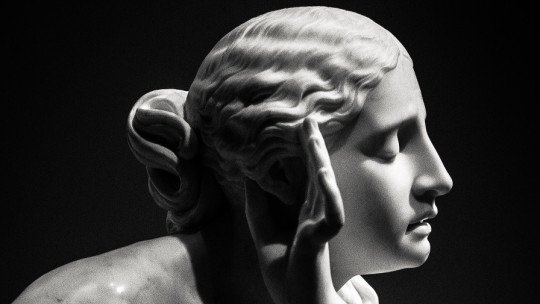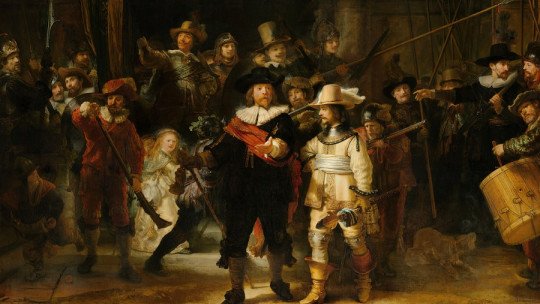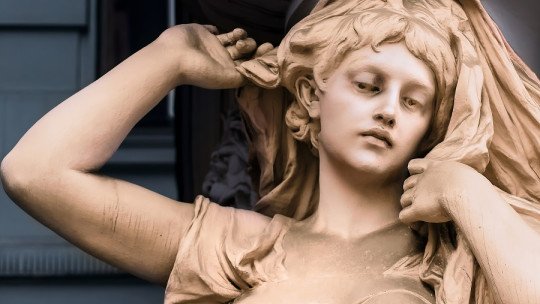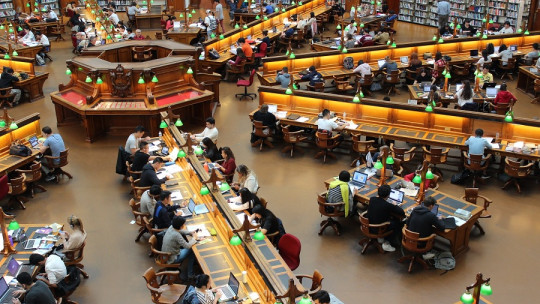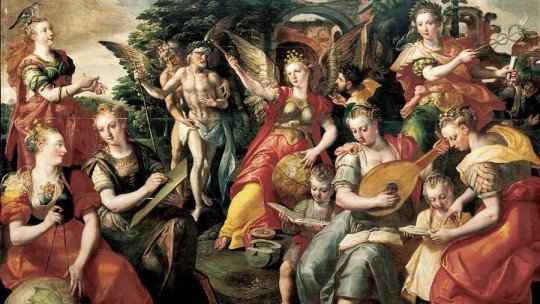One of the star questions about artistic creation is “What is art?” The question has been formulated ad nauseam, especially now that postmodernism has established that any object can be considered a work of art. But there is another question that is no less important, and that derives from the first: “What’s the utility of arts?”
In this article we will try to answer this last question. We present 10 of the functions of artistic creation
What’s the utility of arts?
Defining what art is is complicated, since each culture, each community and even each individual has a different concept about it. However, we do find an essential issue: art is an exclusively human expression and transmits the values, ideas and beliefs of a community or a person.
With that said, let’s move on to the next question. What’s the utility of arts? Below, you will find 10 basic functions of artistic expression, explained in detail.
1. It is a vehicle of expression
This function is possibly the best known: art serves to express ideas, beliefs, emotions, thoughts In fact, there is no culture in the world or in history that does not have its own artistic expression. Art is, therefore, a basic foundation for the cultural construction of the group.
Since human beings have existed, we find testimonies of their artistic expression. Lately, the possibility has even been considered that our most direct relatives, the Neanderthals, were also capable of creating art. Controversies aside, what is very clear is that art is inseparable from humanity.
Art as expression can occur at a collective or individual level. A group artistic creation, such as the Romanesque Theotokos virgins (that is, the representations of Mary as mother of God), which express the religious sentiment of a community, is not the same as the personal expression of a single artist. Although we find individual feeling throughout the history of art, it is not until the arrival of contemporaneity that we can speak of a strictly individual artistic expression.
For example; Both Raphael Sanzio (1483-1520) and Leonardo da Vinci (1452-1519) coexisted in time and artistically shared aspects of the Italian Cinquecento; However, it cannot be denied that the work of one and the other differ considerably. Each of them has imbued their creations with their own personal stamp.
Nowadays, however, singularity prevails above all, faithful expression of the individualistic society in which we live Therefore, and although there are some (and diffuse) currents, we do not find in contemporary art defined stylistic characteristics, as those of the aforementioned Italian Cinquecento could be. Contemporary artists, therefore, express their personal way of feeling, without linking it (in principle) to any collective expression. Of course, this is a generalization and, as always, each case must be studied in detail. What is clear is that one of the main functions of art is to be a vehicle of expression, both for the artist personally and for the community in which he is part of.
2. Strengthens identity and bond to the group
Closely related to the previous one, This second function of art implies integration, through artistic creation, into a collective If we have previously stated that art is a vehicle through which a group or culture expresses its beliefs, then art will also represent a reinforcer of that cultural identity.
For example; If I am a Western person, I will feel little or no identification with a Japanese image. I may like it, of course, and I may even feel a real passion for this type of art, but at no time will I feel “at home.” However, if I contemplate a baroque Virgin, I will most likely feel close to her, even if she is not a Catholic person. Because? Because since I was little I have seen images like that, whether in books, documentaries, museums or churches. The image becomes, therefore, a reinforcer of my Western identity.
If I am Western, but of German origin, it will be more difficult for me to identify with the aforementioned Virgin, since my Lutheran culture differs considerably from the imagery of the Counter-Reformation, of which the Baroque Virgin is a representation. Thus, we see how art and identity are linked, and how through artistic creation we can feel (or not) belonging to the group.
3. Awaken emotions and invite change
Artistic creation is an extraordinary way to shake the viewer and mobilize their emotions And, be careful, because these may or may not be pleasant. In other words, art also serves to awaken in us that which is “not quite right” and which, more than likely, we should examine. In other words: art helps you know yourself.
4. It is a vehicle for reporting
Throughout the history of art we have proven that artistic creation can be a very appropriate way to denounce a reality. We have many examples in this regard, especially those closest in time.
Thus, the avant-garde of the early 20th century had as its (almost) only objective the social complaint Movements such as German Expressionism, Surrealism and, especially, Dadaism, were vehicles through which disenchanted artists protested against a world wounded by the Great War. And in the more recent past, we find many other examples, whether in urban art (graffiti, for example, began as a social complaint), or modern “artivists”, who use art to protest against politics and consumer society.
5. It is a propaganda vehicle
But be careful, because Art can also serve to exercise ideological propaganda for a specific group A very clear example is found in Soviet poster art, whose ultimate objective was to transmit to the masses a distorted and duly reconstructed image of the regime. The same thing happened with Franco’s propaganda in Spain and, of course, with Hitler’s in Nazi Germany.
But it is not necessary to turn to the totalitarian imagery of the 20th century to find art as propaganda. If we travel to the 16th century, we will see that the portraits of kings and emperors were carefully designed to convey to the viewer a specific idea of monarchy. The same thing happened with the Roman emperors, and also with the figure of Napoleon. In The Invalides of Paris, a colossal and excessive building erected as the pantheon of the Great Corsican, we find a profusion of reliefs that represent Napoleon as a new Zeus and as Caesar of the French. Can we say, then, that Les Invalides de Paris is a propaganda vehicle? Yeah.
And even if we focus on our current era, wherever we look, we will find vestiges of propaganda in any artistic manifestation. To some extent it is natural; at the moment when art serves as expression, It is inevitable that this entails a minimum of “advertising” on the part of the issuer But we must be very careful, because from the natural expression of an idea to ideological propaganda it is only a small step. Not everything was going to be pretty in art, of course.
6. He is a creator of beauty
Yeah; More often than not, art is, quite simply, a creator of beauty. Nothing else. In any artistic manifestation we find an aesthetic ideal that is desired to be transmitted
There are few exceptions (for example, the Dada movement, which was, in fact, a denial of art and beauty as such). Thus, a Venus of Praxiteles is manifesting the ideal of feminine beauty of a culture, which was based, above all, on devotion to the human body. A Romanesque fresco, on the contrary, will refer us to the beauty of ideas beyond the beauty of form. A Flemish painting from the 15th century will convey to us the love for detail and thoroughness, just as a Gothic altarpiece will tell us about the beauty of colors and the belief that God is light. A sculpture by Michelangelo refers us to the cult of anatomical perfection… and so on.
Although, as we have already made clear, every artistic manifestation has its ideal of beauty, there are movements that reinforce this idea and include the concept of “art for art’s sake.” Thus, for example, the aesthetic movement of the 19th century, which split into various currents such as symbolism and decadence, advocated that the only purpose of art was the expression of beauty. Like that, without further ado.
7. It is a representation of reality
Art is often a frozen fragment of reality. If in today’s world we appreciate contemplating the painting of a landscape or a face, let’s imagine for a moment what this sensation was like when photography did not exist. So, the only way to capture reality was art. And it was not only about capturing a beautiful landscape, but also about capturing the features of a loved one, for example. A loved one who would disappear with death, but who would continue to be among us through his portrait.
This representation of reality, however, deals with both aspects: the “pretty” and the “ugly” Because reality is not always beautiful. This is so, and artists know it. Thus, if an artist represents the exact moment of a murder, when the knife plunges into the flesh, he will be representing reality, of course; but a rugged and gloomy reality that no one wants to remember.
8. It has a didactic function
Of course, art also serves to teach We find it in abundance in religious representations, where biblical scenes and the lives of saints appear, but also in school manuals, where the drawings often help the boy or girl understand the lesson. Without going any further, until recently history books were illustrated with paintings by historicist painters, who painted scenes from history and which were very useful for students to understand a specific passage from the past (although, often, these paintings had an enormous subjective component, if not propagandistic).
The same care must be taken with the didactic function as with the propaganda function. Because, as often happens, there is a step from teaching to indoctrination, and it is not always easy to realize it.
9. Art as therapy
In recent years, so-called “art therapy” has become popular, which consists of using artistic creation to treat psychological disorders or simply achieve greater emotional well-being. Art therapy is also an important tool to develop a greater degree of expressiveness in the individual, which helps unblock fears and inhibitions
As such, this activity is not intended to create works of art, but is simply about providing the person with a vehicle of expression that allows them to improve their quality of life. The benefits of this therapy are increasingly seen more clearly, especially in children and people with cognitive difficulties.
10. Art as a human need
This last point is, in a way, a summary of all the previous ones. Because art is, quite simply, a human need. There is no human being who does not need to create. It is something that we carry intrinsically and that is part of our humanity; We see it in the small child who picks up a marker and scribbles on a piece of paper and in the elderly person who weaves borders into a quilt. Because art is one of the few things that is exclusively human, and we cannot do without it.

